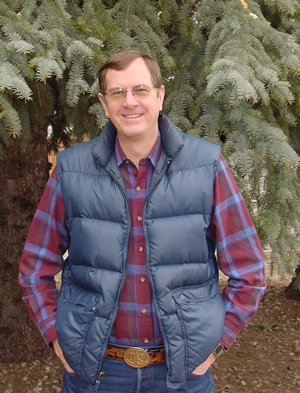 On January 20, Wayne Shepperd, a retired US Forest Service Research Forester , gave us an overview of the recent Cameron Peak Fire that lasted from August until December. By burning some 326 square miles of forest in western Larimer County, the Cameron Peak fire became the largest wildfire in Colorado history. Review the meeting and presentation recording by Clicking Here.
On January 20, Wayne Shepperd, a retired US Forest Service Research Forester , gave us an overview of the recent Cameron Peak Fire that lasted from August until December. By burning some 326 square miles of forest in western Larimer County, the Cameron Peak fire became the largest wildfire in Colorado history. Review the meeting and presentation recording by Clicking Here. During his career, Dr. Shepperd had wide experience in both forest management and forest wildfire investigation. Incidentally, he said that some 90% of wildfires are human caused.
He started by pointing out that forest ecosystems are dynamic, subject to disturbances at various scales. Of particular interest in Colorado have been impact of wildfires and insect attacks, both of which have increased over the last couple of decades. A map of the conterminous 48 states showed that, from 2000 to 2018, most of the wildfires have been in the Western US. In Colorado, the largest three fires in recorded history have occurred in the past year and the top ten have been since 2002. Combined, the Cameron Peak and the High Park fires burned some 17.5% of Larimer County.
Damage from wildfires varies dramatically, even over relatively short distances. In the Cameron Peak fire, soil burn severity ranged from high (6% of the area of the fire; mostly at higher elevations; soil so damaged that it will take years to recover) through moderate (30%), and low (44%) to very low or unburned (20%). From the point of view of overall impact, it is significant that the fire did not approach the lower reaches of the Poudre River. Also, the lower parts of the topography were not dramatically burned, so ultimate impact will be reduced in Dr. Shepperd’s opinion.
Recovery issues will include:
- Water quality: we may see soil and soot in the Poudre for two to five years, depending on storm intensity. Although this is hard to mitigate at this scale, it may have minimal impact on Fort Collins.
- Erosion: depending on storm intensity and the degree to which soils have been rendered water-repellant, there may be some impact on steep slopes and drainages for several years. Soils in the Poudre catchment have low erodibility compared to other wildfires in Colorado and mitigation is locally possible.
- Water quantity: although Forest service research has shown removing trees in snow-dependent ecosystems increases water yield, this is only significant if 30% or more of the area is treated. Neither water yield nor peak runoff in the Poudre should be significantly affected.
- Vegetation recovery: rate and quality of recovery depends on vegetation type. Grasses, forbs, and shrubs may take five years or so. Historically, invasive plants have not been a big problem after wildfires in Colorado. Tree recovery varies by species: Lodgepole Pines (with cones high in the trees and seeds spreading widely) and Aspen (with extensive root systems from which new trees sprout) can recover quickly; Ponderosa Pines and Spruce/Fir stands with seeds that drop near the parent may take many decades to recover.
As recovery progresses, we will likely see increased biodiversity and these naturally produced fire breaks may help to reduce the scale of future fires.
In response to questions about Native American practices and the “Smokey the Bear” era:
The focus on tamping down all forest fires starting in the middle of the last century was based on a European model and was established in an effort to reduce loss of forest by clearcutting. Unfortunately, this practice filled the landscape with mature forests that were ready to burn.
Native Americans apparently used fire successfully to manage the landscape and modern forestry managers are starting to pay attention to historically successful Native American practices. However, modern studies of ancient fires (back to the 1200s) indicate that some ancient fires were pretty large. In the area of Colorado, the average lapse between wildfires was around 12 years at the New Mexico border and around 35 years at the Wyoming border. Although there is some thought that one forest fire would protect an area from later fire for some span of time, the fact that the Cameron Peak fire burned into some of the Hyde Park fire footprint (from only seven years earlier) suggests that the protection is limited.
In very strong fires like the Cameron Peak fire, fire tornadoes can be fairly common, especially if the fire is accompanied by high winds. Fire tornadoes may pick up logs up to 15 feet long and may ignite spot fires on the order of half a mile away.
Different types of fire can cause dramatically different amounts of damage. A crown fire moves so fast that the heat doesn’t penetrate very deeply into the soil so the soil is little damaged. In contrast, logs on the ground may have days to weeks of burning, leading to deep penetration of heat into the soil. For example, a large brush pile that was burned in the 1960s damaged the soil so much that there is no regeneration yet today, some 60 years later.
As for the future, Dr. Shepperd suggests that with the size and number of fires increasing and with the fire season now being year-round, it is likely that fire-fighting capacity will be increased in the years ahead.